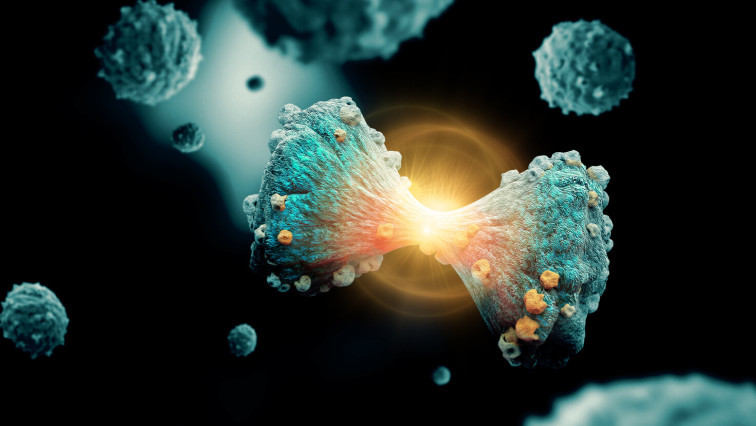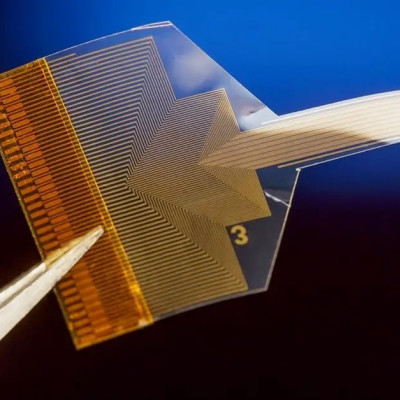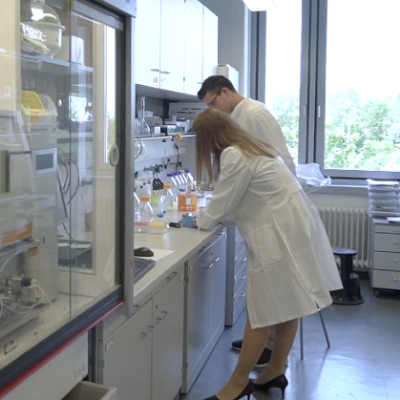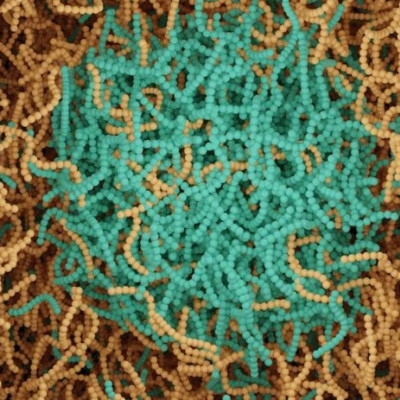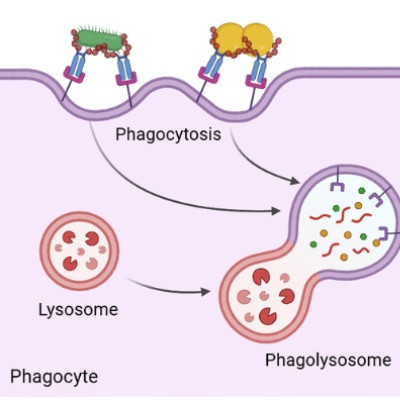Using the Steady-State High Magnetic Field Experimental Facility, researchers led by Prof. WANG Hui from the Hefei Institutes of Physical Science (HFIPS) of the Chinese Academy of Sciences (CAS), in collaboration with researchers from the University of Washington, have constructed a photoresponsive carbon encapsulated magneto nanodonut (CEMNDs) nanoenzyme with dual catalytic activity for photothermally enhanced chemodynamic cancer synergistic therapy. The results were published in Advanced Healthcare Materials.
Iron-based nanoenzyme-mediated chemodynamic therapy (CDT) has attracted much attention in recent years for catalytic tumor therapy. However, the limited uptake of iron-based nanoenzymes by tumor cells and the weak release of iron ions make cancer treatment challenging. It is effective to create the quasi-two-dimensional structure of the iron-based nanoenzyme to enhance tumor cell uptake. The quasi-two-dimensional structure of the iron-based nanoenzyme leads to an increased specific surface area, enabling faster iron ion release and improved Fenton reaction hydroxyl radical (·OH) formation, thereby optimizing tumor therapy.
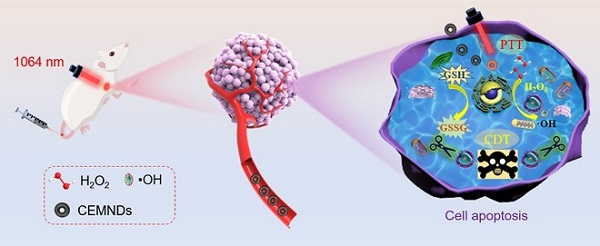
Schematic illustration of synergistic antitumor mechanism of the CEMNDs nanozyme.
In this study, the researchers introduced light-responsive CEMNDs that exhibited dual catalytic activities for CDT.
"CEMNDs can accumulate within tumor sites and penetrate tumor cells, where they act as peroxidase enzymes to convert H2O2 into ·OH," said MENG Xiangfu, first author of the study, "this catalytic process induces targeted tumor cell death."
The carbon layer on CEMNDs constructed by the solvothermal method was able to improve the stability and biocompatibility of the nanoenzyme. The two-dimensional construction of CEMNDs improved the uptake rate of CEMNDS into tumor cells, accelerated the release of iron ions and the Fenton reaction in the tumor microenvironment, and realized the therapeutic ability of CDT. The glutathione oxidase activity of CEMNDs promoted the oxidation of glutathione, protected the ·OH formed by Fenton reaction, and enhanced the therapeutic effect of CDT.
In addition, the optical absorption of CEMNDs in the second near-infrared window (NIR-II) region was able to effectively convert light energy into heat energy, further realizing photothermally enhanced cancer chemodynamic therapy.
The results of this study hold promise for advancing cancer treatment modalities, according to the researchers.
Read the original article on Chinese Academy of Sciences (CAS).

